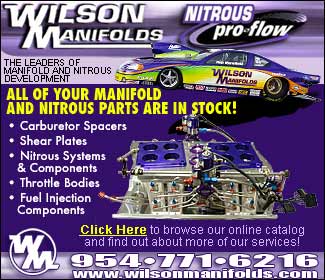| 
BENEFITS
AND WEAK POINTS
In addition to the very important job of allowing your car
to come to a complete stop without stalling the engine, the
torque converter actually gives your car more torque when
you accelerate from a stop. Modern torque converters can
multiply the torque of the engine by two to three times.
This effect only happens when the engine is turning much
faster than the transmission.
At higher speeds, the transmission catches up to the engine,
eventually moving at almost the same speed. Ideally, though,
the transmission would move at exactly the same speed as
the engine, because this difference in speed wastes power.
This is part of the reason why cars with automatic transmissions
get worse gas mileage than cars with manual transmissions.
To counter this effect, some cars have a torque converter
with a lockup clutch inside making it a 5-part converter.
When the two halves of the torque converter get up to speed,
this clutch assembly locks them together via engine vacuum,
transmission pressure activated valve and electrical switch,
eliminating the slippage and improving efficiency. These
lockup style converters are used today in the electronic
overdrive type transmissions.
STALL SPEED
Torque converter stall is a commonly used term and is commonly
misunderstood. Stall is the speed at which the converter
will hold the engine speed and not allow further gain (i.e.,
the engine "stalls"). The key word here is engine.
The speed at which stall occurs with a
ADVERTISEMENT
 |
given converter is
a function of engine peak torque. It is clear that a mildly
modified big block engine will produce more torque than a
mildly modified small block engine thus creating more “Stall” with
the same torque converter. When comparing stall speeds it
is important to account for the engine that drives it.
True converter stall can best be determined when a Transbrake
is used. Testing for stall value by locking the wheel brakes
generally does not produce a true stall value because the
engine power can often cause wheel turn by overpowering the
brakes. This is known as “Foot-BrakeStall.” The
speed determined by this method should be identified as such
when discussing stall speed determination. Launching at full
throttle and observing the peak RPM of the engine just as
the car starts its motion forward at launch determine “Flash-Stall”. This
is a more accurate test. Stall speed test will have better
results with a “crisp, responsive, nicely tuned engine.”
Selection of the right stall speed for your street vehicle
should be matched to the engine’s peak torque, engine’s
torque curve shape and vehicle weight and general use. In
general street applications, the best matched stall speed
for your engine would be one that would flash close to the “peak
torque range” and then lockup efficiently at part throttle
or highway driving.
When selecting stall speed without having prior experience
to go by, it is better to conservatively estimate the engine
torque than it is to over estimate it. If you over estimate
the torque output you will have a converter with a stall
speed too low, making your car slow off the line and have
slow ET. A properly selected stall speed will give you better
launch and better ET. You can see why it is important to
consult with professionals prior to making a stall speed
selection.
Within the converter, stall speed is balanced off against
inefficiency after launch. Getting desired stall at the expense
of performance after launch is just as costly as improper
stall speed to begin. The optimum converter has careful selection
and design of changes, specifications and tolerances to the
impeller, turbine and stator.
PART 2: A few
questions and answers
|

